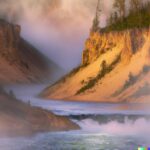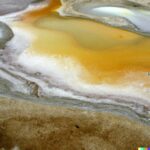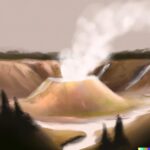Are you a drone enthusiast looking to capture stunning aerial footage of Yellowstone National Park? Before you take flight, it’s important to understand the controversy surrounding drone usage in this iconic national park. From potential risks to strict regulations and penalties for violations, there’s a lot to consider.
In this article, we’ll explore the rules, regulations, and alternatives to flying a drone at Yellowstone, as well as the process for obtaining a special use permit. So, can you legally fly a drone at Yellowstone National Park? Let’s find out.
What is Yellowstone National Park?
Yellowstone National Park, located primarily in Wyoming, is the first and oldest national park in the world, renowned for its stunning natural beauty, diverse wildlife, and unique geothermal features. Covering over 2 million acres, Yellowstone is a designated wilderness area that preserves a wide range of ecosystems and natural wonders.
The park’s history dates back to 1872 when it was established by the U.S. Congress, setting a precedent for the conservation of natural landscapes. Yellowstone’s significance goes beyond being a picturesque destination; it serves as a vital habitat for numerous species, including bears, wolves, bison, and various bird species.
One of the main highlights is the iconic Old Faithful geyser, a symbol of nature’s awe-inspiring power. The park’s rich biodiversity and varied terrain attract millions of visitors annually, contributing to its status as a flagship for national parks worldwide.
Why is Flying a Drone at Yellowstone National Park Controversial?
Flying a drone at Yellowstone National Park has sparked controversy due to concerns about wildlife disturbance, safety risks, and potential environmental impacts. The regulations and restrictions in place aim to protect the park’s ecosystem, wildlife habitats, and visitor experience while preserving the natural beauty of this iconic national park.
Drone usage in Yellowstone is a topic of heated debate as enthusiasts argue for the benefits of aerial photography and capturing breathtaking views. The park’s delicate balance can be easily disrupted by drones buzzing above, causing distress to animals and interrupting their natural behaviors. Safety concerns also arise from the risk of collisions with wildlife or interfering with other visitors’ experiences. The noise and presence of drones can disrupt the tranquility of the park and undermine efforts to maintain its wilderness charm.
What are the Potential Risks of Flying a Drone at Yellowstone National Park?
Flying a drone at Yellowstone National Park poses significant risks, including potential disturbance to wildlife, safety hazards to visitors and wildlife, and environmental damage to the delicate ecosystems. Aerial photography, while tempting, must be balanced with safety measures and environmental protection efforts to ensure the park’s preservation.
Drones can disrupt natural animal behaviors, causing stress and potential harm to various species. It is crucial for drone operators to adhere to designated flight zones and altitude restrictions to minimize disturbances. Integrating wildlife safety protocols into drone operations is essential for protecting both the animals and the integrity of the park. Environmental conservation plays a vital role in sustaining the park’s ecosystems, requiring drone users to follow strict guidelines to prevent habitat destruction and preserve the natural beauty of Yellowstone.
What are the Rules and Regulations for Flying a Drone at Yellowstone National Park?
The rules and regulations for flying a drone at Yellowstone National Park are stringent to ensure compliance with safety measures, protect wildlife habitats, and prevent disturbances to park visitors. Drones are prohibited in designated no-fly zones, and strict guidelines govern aerial photography activities to maintain park safety and environmental conservation efforts.
These regulations also outline specific safety compliance measures that drone operators must adhere to while flying within the park boundaries. It is crucial to maintain a safe distance from wildlife and nesting areas to avoid causing any disruptions. Drones must not interfere with park operations or emergency services. Unauthorized commercial drone operations are strictly prohibited, and violators may face penalties or legal actions as outlined by the park authorities.
Following these rules is essential to protect the park’s natural beauty and ensure a harmonious coexistence with nature.
Can You Legally Fly a Drone at Yellowstone National Park?
Legally flying a drone at Yellowstone National Park requires strict adherence to Federal Aviation Administration regulations, airspace restrictions, and park-specific guidelines. Drone operators must comply with legal requirements, obtain necessary permits, and follow designated flight paths to ensure public safety and ecological preservation within the park.
The FAA regulations set forth specific rules for drone operations, including altitude restrictions and prohibited flight zones. Airspace management is crucial to prevent interference with other aircraft and protect sensitive wildlife habitats.
Yellowstone’s unique ecosystem demands heightened awareness from drone users to minimize disturbances to wildlife and natural surroundings. Understanding the legal considerations for drone usage in national parks is vital in maintaining the balance between recreational enjoyment and environmental conservation.
What are the Penalties for Violating Drone Regulations at Yellowstone National Park?
Violating drone regulations at Yellowstone National Park can result in severe penalties, including fines, citations, and possible legal action. Park rangers actively monitor drone activities and enforce compliance with regulations to ensure the safety of park visitors, protect wildlife, and maintain the pristine environment of the park.
The enforcement actions regarding drone violations in Yellowstone involve strict measures to deter unauthorized drone usage.
Rangers utilize advanced monitoring practices such as aerial surveillance and ground patrols to detect any non-compliant drone operations within the park’s boundaries. Those caught violating regulations may face immediate confiscation of their drones, hefty fines, and even potential criminal charges. The penalties for non-compliance serve as a crucial deterrent, emphasizing the importance of adhering to the established regulations for the preservation and harmony of Yellowstone’s natural habitat.
How Can You Get Permission to Fly a Drone at Yellowstone National Park?
Obtaining permission to fly a drone at Yellowstone National Park requires following specific guidelines, obtaining the necessary permits, and adhering to park regulations. Drone operators must seek approval through the designated process to ensure compliance with park guidelines and safety measures for aerial activities.
One of the key steps in the permit process is to submit a detailed application outlining the purpose of the drone flight, including date, time, and location of operation. Operators are required to provide proof of FAA certification, insurance coverage, and acknowledge their understanding of the park’s restrictions on drone usage.
Once the permit is granted, operators must strictly follow the designated flight areas and altitude limitations set by the park to minimize disturbance to wildlife and other park visitors.
What is the Process for Obtaining a Special Use Permit?
The process for obtaining a special use permit to fly a drone at Yellowstone National Park involves submitting a formal application to park management, outlining the purpose of the drone operation, and ensuring compliance with legal requirements. The park authorities review permit requests to evaluate the proposed drone activities and ensure alignment with park policies.
Upon receiving the application, park officials assess the potential impact of the drone flight on wildlife, natural resources, and visitor experience. It is crucial to provide detailed flight plans, safety measures, and proof of liability insurance as part of the permit application. Demonstrating proficiency in operating drones and adherence to Federal Aviation Administration (FAA) regulations is essential. The park management carefully considers factors such as noise levels, disturbances to wildlife, and visitor safety when granting special use permits for drone flights within Yellowstone National Park.
What are the Requirements for Obtaining a Special Use Permit?
The requirements for obtaining a special use permit to fly a drone at Yellowstone National Park include demonstrating compliance with park guidelines, securing necessary flight permits, and facilitating aerial monitoring activities. Drone operators must adhere to park regulations, engage in responsible aerial exploration, and contribute to the park’s conservation efforts.
Park guidelines play an essential role in preserving the delicate ecosystem of Yellowstone, ensuring that drone operations do not disrupt wildlife or natural habitats. Securing flight permits involves submitting detailed itineraries, safety plans, and emergency protocols to park authorities. Aerial monitoring responsibilities include providing data on wildlife populations, habitat changes, and environmental impacts to aid in conservation efforts. By following these procedures, drone operators can help protect Yellowstone’s unique biodiversity and support ongoing conservation initiatives within the park.
What Are the Alternatives to Flying a Drone at Yellowstone National Park?
Visitors to Yellowstone National Park have numerous alternatives to flying drones, such as engaging in guided tours, participating in outdoor recreational activities, and exploring the park’s diverse ecosystems through hiking or wildlife observation. These alternative experiences provide opportunities for immersive exploration and appreciation of the park’s natural wonders.
One popular option for visitors seeking a guided experience is to join ranger-led tours, where knowledgeable park staff offer insights into the geology, ecology, and history of Yellowstone.
For those seeking active pursuits, activities like horseback riding, biking, or fishing in the park’s pristine lakes and rivers are perfect options.
Exploring the park’s thermal features, such as geysers and hot springs, provides a unique way to witness the geothermal wonders that make Yellowstone so unique and captivating.
What Other Activities Can You Do at Yellowstone National Park?
Yellowstone National Park offers a multitude of activities for visitors, including exploring scenic landscapes, viewing majestic wildlife, and enjoying aerial views of the park’s natural wonders. Tourist activities range from hiking and camping to wildlife watching and experiencing the park’s stunning geothermal features, making it an ideal destination for nature enthusiasts and outdoor adventurers.
The park boasts an array of attractions, such as the iconic Old Faithful geyser, Grand Prismatic Spring, and the mesmerizing Yellowstone Lake.
Visitors can also embark on guided tours to learn about the park’s rich history and geology or take part in ranger-led programs for a more immersive experience.
Don’t miss the chance to witness the spectacular wildlife, from bison herds to elusive wolves, in their natural habitat.
Whether you’re seeking tranquil moments in nature or thrilling adventures, Yellowstone has something for everyone.
What Other National Parks Allow Drone Use?
While Yellowstone National Park restricts drone use, other national parks across the country permit drone operations under specific guidelines and regulations.
- For example, Grand Canyon National Park allows visitors to fly drones for recreational and educational purposes, as long as they follow the park’s regulations. Drone operators are required to obtain a special use permit before flying in the park, ensuring the safety of wildlife and other visitors.
- Similarly, Zion National Park also allows drone flights with prior authorization. This enables visitors to capture stunning aerial views of the park while respecting the natural environment and the experiences of other park-goers.
Last Updated on February 11, 2024 by Jon Waraas – Originally Posted: February 11, 2024

I’m Jon Waraas, and I’ve been navigating the online world since 2006. By day, I’m the proud owner of some eCommerce gems, and by night, I’m the voice behind the adventures on Waraas.Com.
My heart, however, belongs to the wild beauty of Yellowstone National Park. I’ve got a collection of websites dedicated to sharing the wonders of this natural masterpiece. Oh, and did I mention? I’m currently building my own cabin inside the ghost town of Gilmore, Idaho – a cabin with tales to tell!
When I’m not immersed in the digital realm, you’ll find me lacing up my boots for a good hike or setting up camp under the star-studded sky.




